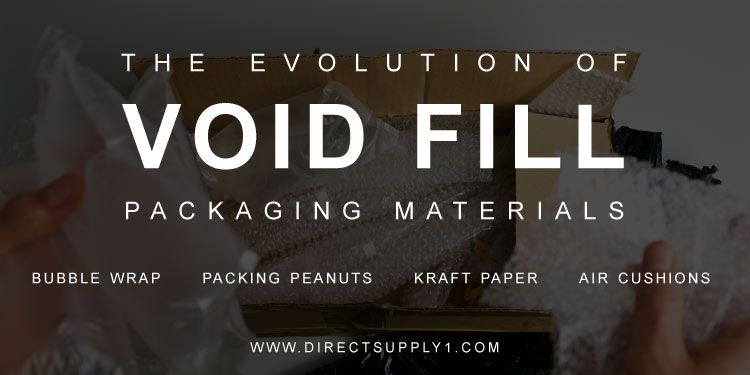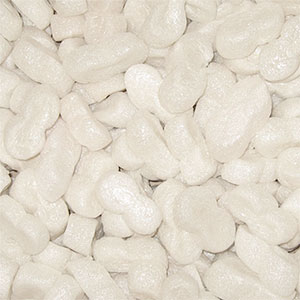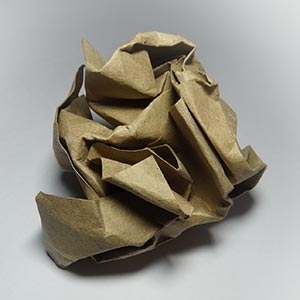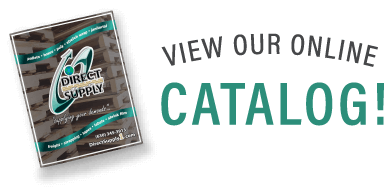
At the end of 2016, Amazon shipped 3 million packages a day. Chinese eCommerce giant Alibaba shipped an overwhelming 12 million packages per day (source). A more recent number from January 2018 for Amazon shows that the company shipped over 5 billion items worldwide through their Prime program (not including non-Prime sales) in 2017, although there is no breakdown of how many packages that entailed.
Both retailers have grown exponentially throughout 2017. While Amazon and Alibaba are the top two e-Tailers today, don’t forget to consider 2016’s “runners up” like Apple ($16.8 billion in online sales) and Walmart ($14.4 billion in online sales; source).
Considering the millions of packages traveling around the globe each day, you may take a step away from your amazement at the sheer number of goods being delivered and say to yourself, “Wow, the packaging materials industry must be booming right now!” Well, you’d be right to think so!
According to the Freedonia Group, a market research firm, eCommerce accounts for over 8% of total retail sales, and has made protective-packaging companies a $5.6 billion industry. The same group forecasted that US demand for air cushions alone was up by 5.5% at the end of 2016.
That’s right – air cushions. Which is actually the product that spurred the idea behind this article. If you’ve ordered anything online over the last five years, it’s likely that your package’s contents were protected by air cushions, and not packing peanuts or bubble wrap. So what happened? Let’s take a look at the history of some of the top void fill packaging materials, and compare the pros and cons of each type of protective packaging product.
Bubble Wrap History

Bubble wrap was invented in 1957 by two men in Hawthorne, New Jersey: Alfred Fielding and Marc Chavannes. They had set out to develop a kind of 3D wallpaper, but as you might expect, this original purpose fell flat. They later determined that their failed wallpaper concept could be used as a wonderful form of packaging material, able to keep fragile products safe during transit. One of the inventors, Alfred, co-founded Sealed Air Corporation in 1960.
As most readers will be aware of, bubble wrap has different bubble size options. Wrap with larger bubble cells, or large bubble wrap, is used to protect bigger products (there is a specific product called heavy duty bubble wrap for heavier items), while smaller cells are used for smaller, lighter products.
You will find bubble wrap isn’t usually used as a void fill packaging material, but is used more commonly to wrap fragile items, giving them a 100% surround “air padding” (think about glassware and ceramics).
Pros & Cons of Bubble Wrap:
Bubble wrap is a wonderful way to pack fragile materials. It’s affordable and easy to source, even from consumer-focused stores like Home Depot, as many people use bubble wrap to protect breakable items during a move. The variation in bubble cell size and it’s lightweight profile also allow it to be used effectively in envelopes to protect thinner contents in the form of bubble wrap pouches. When shipping electronics, there is anti-static bubble wrap available, thereby protecting electronic chips from static electricity.
On the other hand, many forms of bubble wrap are not biodegradable, but can often be recycled. The drawback here is that most sheets aren’t marked with a recycling symbol, so much of it winds up in the trash can. It’s also not practical to use as void fill packaging, as the shipper winds up using a lot more bubble wrap material to fill a void space that would be better (and more affordably) filled by paper or air cushions. There are also storage considerations regarding bubble wrap, as the bubble cells are pre-inflated and take up valuable floor or shelf space.
Need to buy a bubble wrap roll for your packing needs? Contact Direct Supply for a quote!
Packing Peanuts History
The Void Fill Packaging Materials That Makes A Mess

To manufacture his void fill packaging material, Robert developed a machine that produced said material. As explained in this article from Vision Launch (quoted also from Wikipedia):
“To facilitate the creation of the packing peanut, Holden also invented an apparatus that would help to cut and expand plastic members through a steaming process. By feeding plastic strips through the device, it would create the foamy cellular structure that is the trademark of the classic packing peanuts. It also allowed the plastic to be created in such a way that they would interlock, providing a more secure shipping solution.”
Holden noted in his patent that the packing material “provides the members with resilience so that they cushion against shock and vibration, and resist crushing or permanent deformation.”
Today, there are two main types of packing peanuts in production: Polystyrene foam peanuts, and starch-based biodegradable packing peanuts.
Polystyrene Packing Peanuts
Also called Styrofoam packing peanuts, these are based on Robert Holden’s original invention. Robert’s patent was purchased by the Dow Chemical Company in 1965. As such, Dow is widely seen as the inventor of the packing peanut, since they put it into commercial production. Since the 1990s, these previously “bad for the environment” void fill packaging materials have been able to be recycled and reused. You can tell a recycled poly packing peanut from a virgin resin peanut by its color. Green peanuts mean the product is made from 70% or more recycled polystyrene, while white peanuts indicate they were made with non-recycled materials. Pink peanuts mean that an antistatic agent has been applied (source).
Starch-based Packing Peanuts
Also called biodegradable packing peanuts, these dissolvable loose fill packing packing peanuts were developed in the early 1990s. The “starch” that makes up these peanuts comes from crop-based sources (like corn starch) and is non-toxic. They can be dissolved in water and, yes, even eaten, although there is no nutritional content in them and they’ve not been prepared in food-safe conditions.
Pros & Cons of Packing Peanuts:
Poly peanuts are lighter than their starch-based counterparts, which means savings on shipping costs when comparing the two. Poly peanuts can also be recycled, although not as easily as starch-based peanuts. For poly peanuts, you’ll need to call your local recycling center to see if styrofoam packing peanuts are accepted. If they are not, you can try to “donate” your packing peanuts to a local shipper, as they might be able to reuse them. If poly peanuts are not recycled and simply thrown in the trash, they may wind up sitting in a landfill for many years.
Biodegradable peanuts, on the other hand, can be recycled by dissolving them in water and pouring used water down the drain. If you throw starch peanuts in the trash, they will biodegrade on their own over a short period of time. Aside from weighing more than poly peanuts, starch-based peanuts are usually more expensive to buy.
Major con of both kinds of packing peanut: They make a huge mess for the recipient of a package and take up a ton of space in your recycling bin!
Looking for where to buy packing peanuts? Get a quote from Direct Supply!
Kraft Packing Paper History
The Void Fill Packaging Materials That Makes Great Campfire Kindling

As you may assume, plain brown paper was developed very early on, much earlier than any of its counterparts. The process to make kraft paper was developed by a man named Carl F. Dahl from Germany in 1879. Carl named his process the “kraft process” because the word “kraft” in German translates to “strength” in English, and the paper produced by this process was very strong compared to regular letter-type paper. The patent for Carl’s process was issued in 1884, and commercial production of kraft paper began in Sweden in 1890. Improvements were made to Carl’s process in the 1930s that allowed the entire process to be almost “closed loop,” meaning there was little to no waste, aside from some of the chemicals used.
Today, kraft paper is used not only as a void fill packaging material, but also as brown paper grocery bags, parcel wrap and butcher’s meat wrap. It can be purchased in either roll or sheet forms to suit your packing needs.
Pros & Cons of Kraft Paper (or Newspaper for the Non-Industrial Packer) for Packaging:
The major pro of packing paper is that it is completely recyclable, just like regular newspaper, and is also biodegradable. People can also re-use packing paper as kindling for their fireplace during the winter months (or bonfires throughout the summer).
Kraft packing paper also has the advantage of being able to get “smushed down” quite small to fill packing void spaces where an air cushion might not fit. Cost-wise, it’s cheaper to buy kraft paper versus air cushions, since the cushion material typically costs a bit more. Plus, for commercial scale air pillow applications, you’re going to want to invest in an air filling machine rather than filling the pillows by hand.
However, kraft packing paper also weights more than air pillows, causing your shipping costs to add up over time. Many shippers find that although the purchase price of paper may be cheaper to buy, they wind up saving hundreds of dollars a month by switching to air pillows. The other major drawback to packing paper is that, depending on the package contents, it can be squished down and flatted during transit (after absorbing many shocks and vibrations) to the point where it no longer offers proper protection for your goods. If you have people manually packing your boxes, you’ll also notice that they are likely to sustain more papercut-type injuries dealing with kraft paper than they are with air cushions.
Buy kraft packing paper (sheets or rolls) from Direct Supply – contact us for a quote!
Air Cushion Packaging
The Lightest Void Fill Packaging Material

We were unable to find an exact “birth date” for Sealed Air’s air cushion void fill products. The closest thing we could find was this article referring to “newfangled air pouches” dated September 2010.
Pros & Cons of Air Cushion Packaging:
Why have filled air cushions become so incredibly popular over the last six years? Pulling from the pros and cons of the void fill packaging materials reviewed above, void fill air bags provide a lighter shipping weight. They are safer to handle than kraft paper for employees working with these packing materials. They are definitely a wonderful, clean respite from the mess and disposal requirements of packing peanuts. The cushions are comparatively cheap to buy once an air fill machine investment has been made. They are easy to store and take up less space compared to bubble wrap (unless you buy pre-inflated cushions). And they fill a variety of void spaces efficiently and flexibly, thanks to their various sizing options.
They’re also recyclable, although depending on your area, you may have to bring them to a special recycling center, which causes some earth-friendly worries To combat this issue, some manufacturers have developed biodegradable air cushion packaging. Another drawback is that if a shipper isn’t using a box optimized for its product’s size (eg: a box that is too large for its product), numerous air cushion bags need to be used to properly fill the extra space. This exacerbates wasteful use of the cushions, and contributes to the recycling dilemma we mentioned.
Direct Supply offers a variety of air cushion packaging products. Contact us for a quote!
Conclusion
We hope you’ve enjoyed reading a brief history of some of the most popular void fill and packaging materials! If you have any questions about what packing solution your business should use, please contact us today and we’ll help you develop a quality packaging program designed to perfectly “fill” your needs…and your packages!




